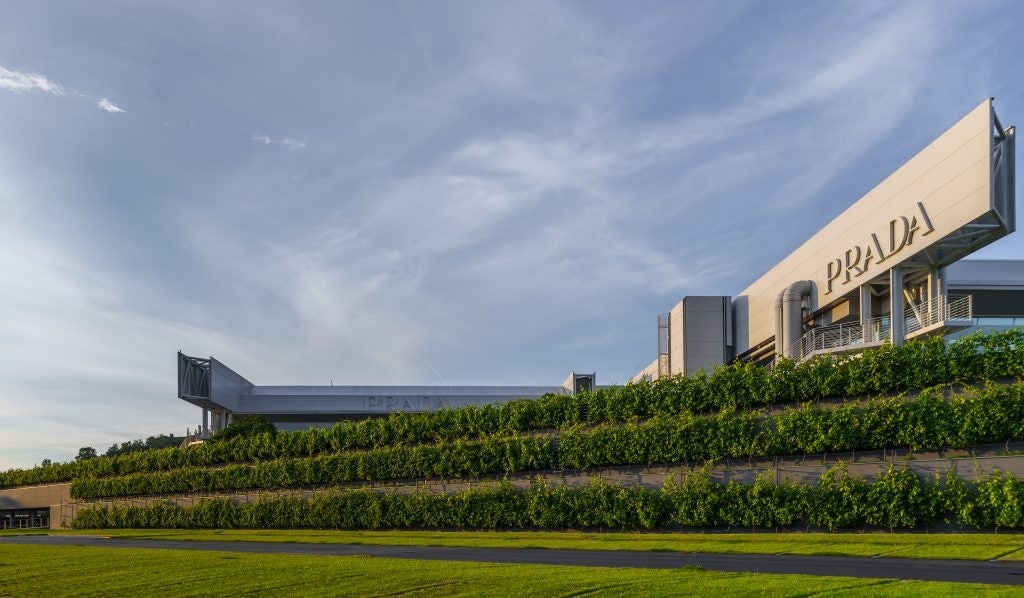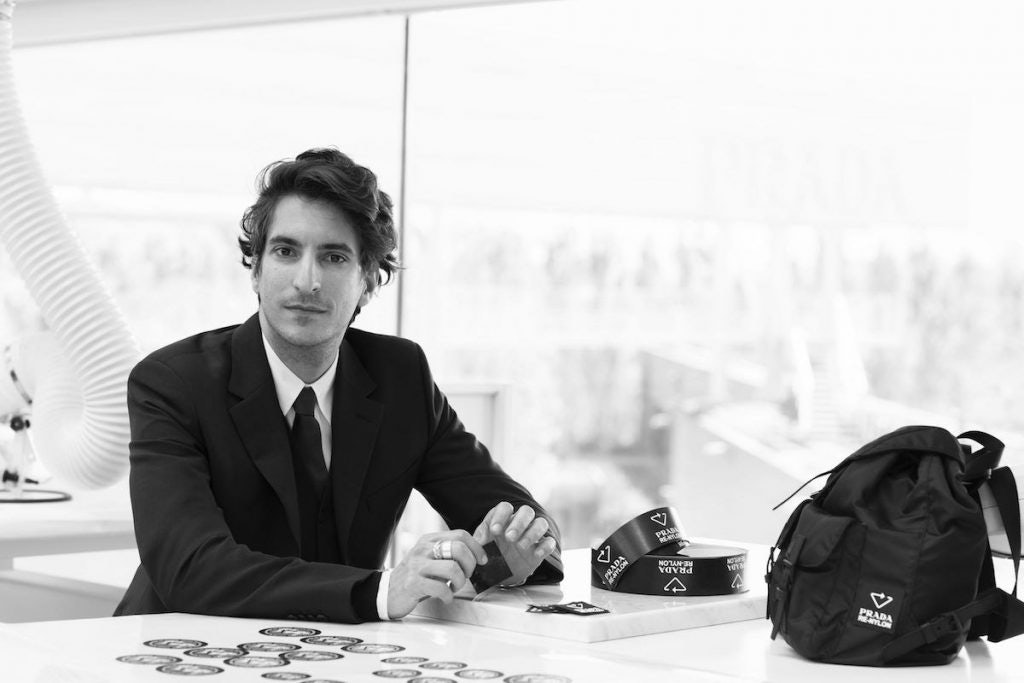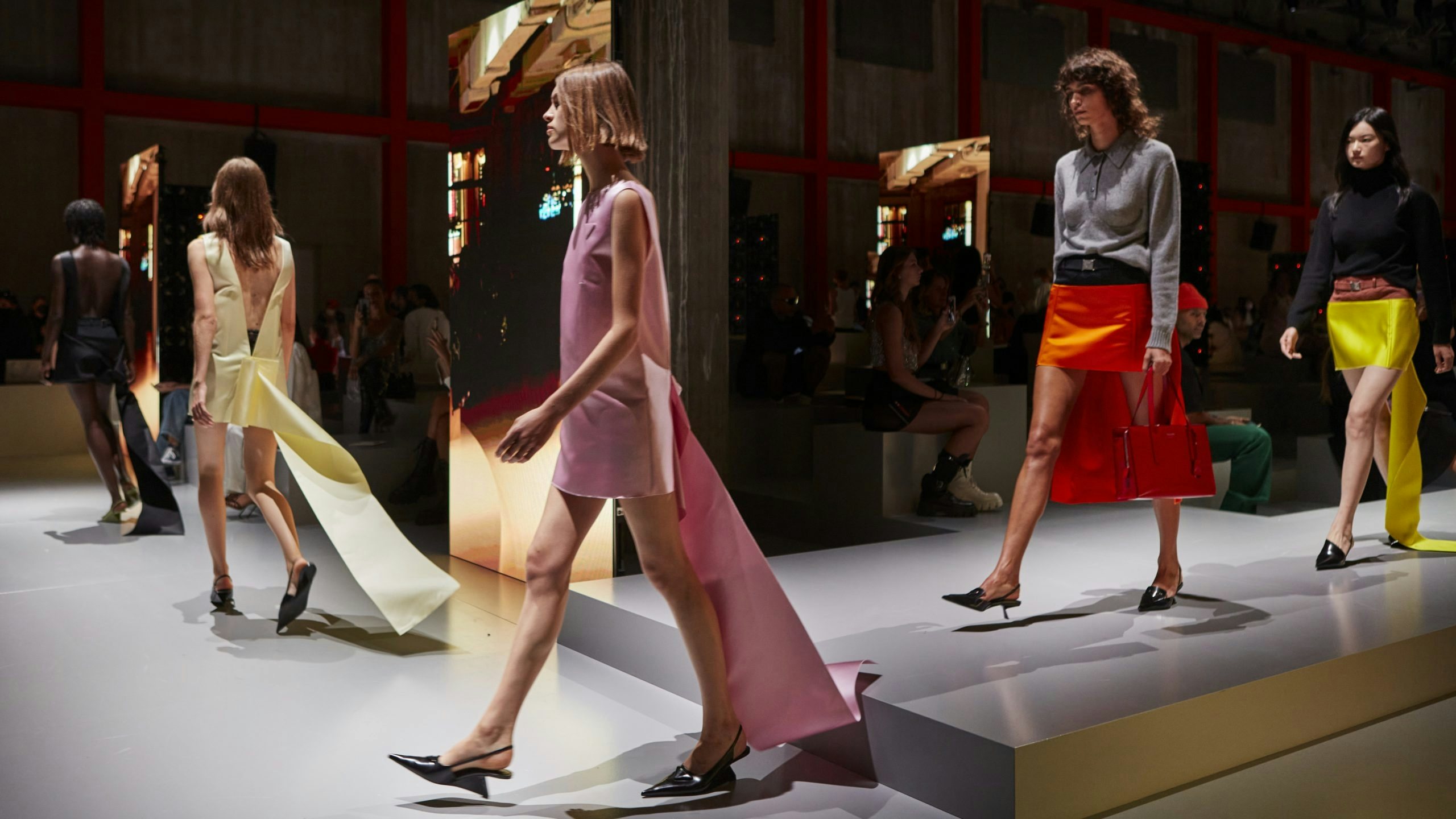Key Takeaways:#
- Prada has unveiled an ambitious plan to reach $5 billion in revenue in the medium-term with EBIT growing 20 percent.
- The Italian group is heavily investing in vertical integration of its supply chain to protect its "Made in Italy" authenticity.
- The succession plan for Mr. Patrizio Bertelli is on the table and confirmed scion Lorenzo Bertelli will succeed as CEO.
The Prada Group held its second Capital Market Day at the company’s cultural hub Fondazione Prada since its 2011 Hong Kong listing. The positive outlook that emerged from the press conference has greatly boosted investors’ confidence in the brand. As a result, the house’s share price lifted by 5.4 percent the following day.
That confidence was seen in Prada’s third-quarter report, where numerous performance indicators were well above 2019 levels: Retail sales were up 18 percent, gross margin exceeded 76 percent from Q3 2021, and EBIT (earnings before interest and taxes) margin also achieved remarkable growth.
As expected, mainland China played a crucial role in Prada’s quick rebound: The local market rose 77 percent in the first half of this year compared with the same period in 2019. The country is predicted to remain a key growth engine for the brand. Plans to expand its footprint were unveiled as well as further consolidation of online channels and experimentation with new e-commerce platforms.
Overall, group CEO Patrizio Bertelli optimistically foresaw the company will reach $5 billion in revenue in the medium term, with EBIT growing to 20 percent, and detailed aims to double current online penetration to 15 percent of its retail revenue. Finally, a succession plan is also in place from the Prada family.
Jing Daily investigates whether Prada has the assets to achieve its midterm goals and if strategies are resonating with luxury’s biggest market-to-be, China.
Prada’s name is bigger than its business#
Compared to rival brands Louis Vuitton, Gucci, and Chanel, Prada’s business size is relatively small, yet the brand’s awareness is toe to toe with the aforementioned luxury rivals. According to fashion ranking Lyst’s Q3 Index, Prada sits fourth place among the most popular brands and its Raffie tote bag topped the hottest women’s products. While there is little doubt the Italian house has been strong in building a unique identity, will that translate into sales?
A strong brand image and legacy provide a solid basis for any business to sell products. As stated by the group’s chairman, Paolo Zannoni, “Today Prada as a brand is bigger than Prada as a business and that gives strong potentiality.” The group’s affirmation indicates its ambition to unlock the full potential of its “Pradaness.”
The Maison is expanding into new categories — beauty, home, and fine jewelry. In November 2021, Prada presented its fine jewelry pop-up store, “Triangolo” at Beijing SKP and announced actor Li Yifeng as brand ambassador. The gold jewelry takes inspiration from Prada’s authentic emblem — triangle logo — which instantly recalls the brand. The distinctive aesthetic is likely to resonate with its loyal customers.
[wpgallery id="127195"]
Meanwhile, great hope has been placed in Prada’s sister brand Miu Miu. The company unveiled it will invest $170 million in brand communication to further boost sales. The subline has developed its own identity contrasting with Prada’s sophisticated and trendsetter image, Miu Miu appeals to a target of empowered and rebellious female shoppers. The distinctiveness of the two labels prevents cannibalization, and additionally, the exposure to different segments will eventually mitigate the potential decline of one.
Nonetheless, both Prada and Miu Miu are tightly bound with the company head, Miuccia Prada. Looking forward, the succession plan for Mr. Patrizio Bertelli is on the table and confirms scion Lorenzo Bertelli as the next CEO; the direction for the creative side is hazier and who will succeed Mrs. Miuccia Prada (aged 72) is more pressing. Raf Simons could be likely and if so, co-directing is a safe route for consumers to familiarize with the designer instead of an abrupt change.
Investing in vertical integration to protect Italian know-how#
Italian artisanal skills are highly appraised in China, and beyond. However, Italy’s reality (medium-small factories) is struggling in an increasingly dynamic and hyper-digitized sector. Given that craftsmanship is failing to be handed down through generations, skills are plummeting. The Prada Group is heavily investing in vertical integration of its supply chain to rescue "Made in Italy," which is part of the brand’s DNA.
Recently the company acquired high-end knitwear-maker Filati Biagioli and took minority shares in other key factories. This year, investment in manufacturing totaled $90 million with plans to further invest $78 million in the sector next year. Thanks to the continuous efforts in improving the supply chain efficiency and building industrial sites, currently 40 percent of Prada’s products are made from the group’s 23 directly owned factories. The goal is to reach 60 percent in the midterm.

Unlike competitors LVMH and Kering, Prada is not looking to expand its brand portfolio. Mr. Patrizio Bertelli confirmed during this conference when he said: “In Italy, it is too late to create a luxury conglomerate.” But by further integrating the supply chain into the business, Prada can secure the authenticity of its Made in Italy in the long term, and that will become a strong differentiating factor in the highly saturated luxury market. In the case of China, as the consumer becomes more sophisticated, quality and craftsmanship which often equates to Made in Italy will be more desirable than any brand logo.
Enlarging values as a new approach to Gen Z#
The pandemic has been a turning point for Prada. Under the lead of Lorenzo Bertelli, the group has accelerated its shift towards the digitization of its sales and communication channels. This came alongside a rejuvenation of its brand image to respond to the demands and changing values of a new segment of young consumers, representing 70 percent of consumption by 2025.
In recent years, Prada has been pushing for material innovation (fully converting to re-nylon fabrics) and supporting an educational program dedicated to ocean preservation, “Sea Beyond,” in partnership with UNESCO. But much more is required from luxury’s leading players to set the example for the whole industry. Prada is feeling that pressure. During the conference, the company outlined its commitment to reach net-zero by 2050. To enrich the ESG discussion at board level, Marketing Director and Head of Corporate Social Responsibility, Bertelli explained a plan to establish an ESG committee by mid-2022 with two leading profiles in the field joining the board: Pamela Culpepper and Anna Maria Rugarli.

In the blueprint, the group also cited circular thinking. Will this mean experimentation with second-hand luxury like Gucci Vault or rental services such as The Lauren Look by Ralph Lauren? In today’s world, the concept of luxury is slowly shifting away from ownership for some; young locals are quickly catching up with the resale trend: by August 2021, there were 9,758 registered business activities related to second-hand luxury resale in China — one-third of which opened between 2020 and 2021. The sector is growing more than twice as fast as first-hand luxury and offers much promise.
From maintaining a distinctive brand image to integrating a vertical supply chain, and outlining sustainability initiatives, Prada has been building a roadmap to reach its target of $5 billion revenue and 20 percent EBIT in the midterm. Given the assets, those at the event, such as analyst Luca Solca from Bernstein, believed the forecast was quite conservative. But Prada set a refreshingly realistic tone.

